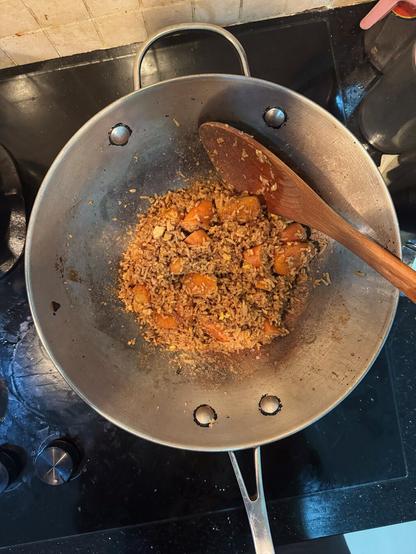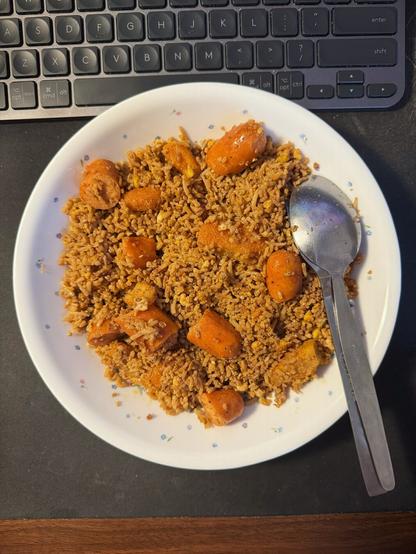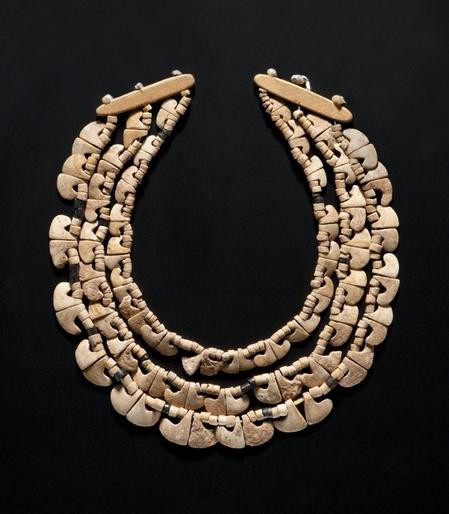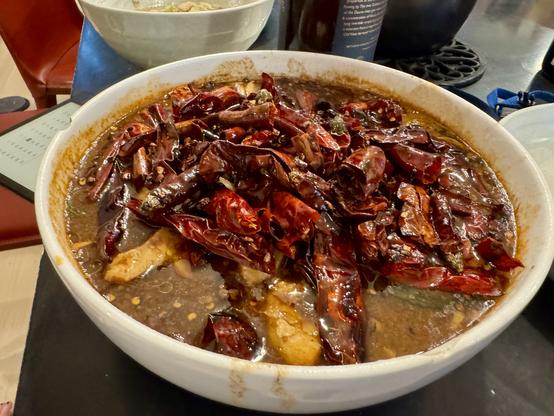ubi
@ubi@ecoevo.social
- 496 Followers
- 467 Following
- 22.7K Posts
@skinnylatte @irene oh! I have a whole theory about abstraction levels in Chinese food names! Let me see if I can remember it...
Level 0: the name of the dish describes how to prepare it (e.g., 回鍋肉, twice cooked pork; 樟茶鸭, camphor-smoked duck)
Level 1: the name of the dish specifies the flavors but leaves the exact implementation unspecified (e.g., 孜然羊肉, cumin lamb)
Level 2: the name of the dish specifies an abstract notion of the flavor only (e.g., 怪味鸡, strange-flavor chicken)
Level 3: the name of the dish conveys only a shared understanding of the subjective experience of eating the dish (e.g., 口水鸡, mouth-watering chicken)
Level n: the name of the dish describes something that could possibly be considered food but, thankfully, is unrelated to the one actually served (e.g., 夫妻肺片, husband and wife's lung slices)
Level ∞: the name of the dish is fully abstract and bears no relation to the dish or any other food (e.g., 佛跳墙, Buddha jumping over the wall; 蚂蚁上树, ants climbing a tree)
New gender-neutral greeting just dropped. (From Dessa's e-newsletter today.)
Was home alone today… so I made Nasi Goreng for the first time. I made do with what I had which was janky as hell, but it was edible… I think 🤠 #MakanApaToday
8 years ago today, I was in siem reap with my high school best friends! my job at the time wouldn't approve my travel leave, so I just quit. 😂 your twenties are definitely for making weird decisions like that (never regretted it, hated that job anyway).
Fashionable some 6,000 years ago: a stunning Neolithic three-row necklace from Sachsenheim, dating to around 4,000 BC. This remarkable piece, which comprises more than 500 limestone and jet beads, is a witness to both craftsmanship and style.
📷 Landesmuseum Württemberg
The Palestinians of Ras Ain al-Ouja are the latest Bedouin community targeted for expulsion by Israel. They are being forced out through violent settler harassment as part of Israel’s plan to annex most of the West Bank. https://mondoweiss.net/2025/06/major-palestinian-bedouin-village-faces-expulsion-by-israeli-army-and-settlers/

Major Palestinian Bedouin village faces expulsion by Israeli army and settlers
The Palestinians of Ras Ain al-Ouja are the latest Bedouin community targeted for expulsion by Israel. They are being forced out through violent settler harassment as part of Israel’s plan to annex most of the West Bank.
Just saw someone said "AI is democratizing art"...
Do people think artists horde their talent like billionaires horde their wealth???
Do people think artists horde their talent like billionaires horde their wealth???
One of my favorite things about Sichuan food is that this (delicious!) dish goes by the innocuous name of "water-boiled fish".
(my homemade version!)










